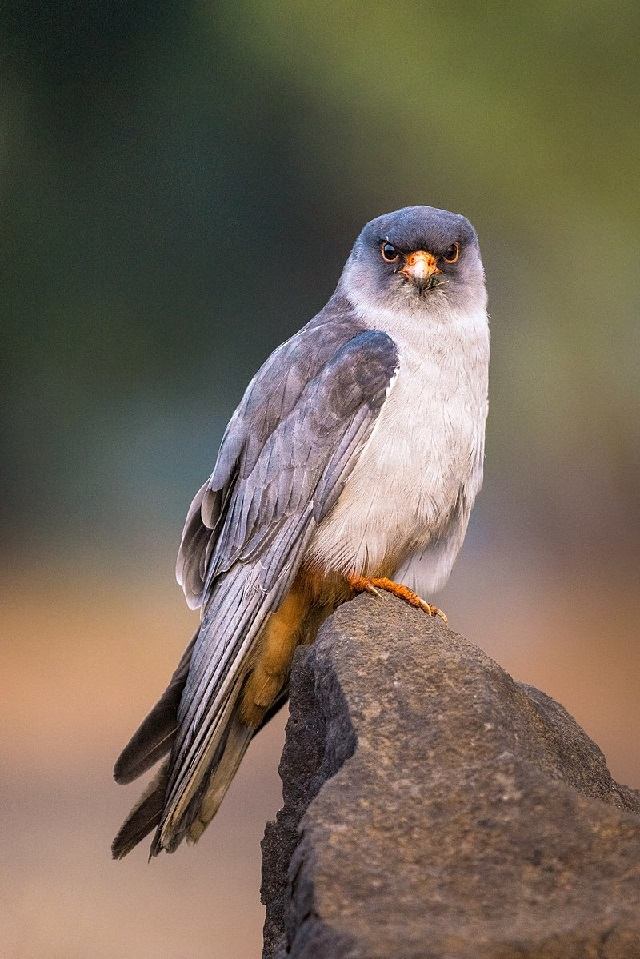To contain the ongoing COVID-19 pandemic, India was put under nationwide lockdown in 2020. Amid this, birds call filled the air due to a drop in noise pollution and less human intervention. India witnessed rare migratory birds flocking in thousands in the year 2020. A list of such birds is mentioned below.
1- Whooper Swan: It is also known as Common Swan. It is the Eurasian counterpart of the North American trumpeter swan and belongs to genus Cygnus. It is considered to be amongst the heaviest flying birds.

Image Credit: Andreas Trepte
| Scientific classification Kingdom: Animalia |
2- Desert Finch: It is also known as Lichtenstein's desert finch. It is mostly spotted in desert areas where water is readily available. However, it can also be found in low mountains and foothills, and in cultivated valleys. It feeds on seeds and insects.

Image Credit: Francesco Veronesi
| Scientific classification Kingdom: Animalia |
3- Greater White-fronted Goose: It is named after the patch of white feathers which borders the base of its bill. In Europe it is known as 'White-fronted Goose' while in North America is it known as 'Greater White-fronted Goose'. The male is typically larger in size and both male and female are similar in appearance.

Image Credit: Walter Siegmund
| Scientific classification Kingdom: Animalia |
4- Red Knot: It is a medium-sized shorebird and is called Knot in the English-speaking region of Europe. It is said that it got its name and species epithet from King Cnut, however, there's no historical foundation for this etymology. It is interesting to note that both sexes incubate the eggs, but once the eggs are hatched, the female leaves parental care to the male ones.

Image Credit: JJ Harrison
| Scientific classification Kingdom: Animalia |
5- Amur Falcon: The males and females differ in appearance. It feeds mainly early morning or late in the evening on a wide range of insects in the air or on the ground.

(Female)

(Male)
Image Credit: Sumeet Moghe
| Scientific classification Kingdom: Animalia |
6- White-crowned Penduline-tit: The males have a pale crown and black mask while the females have a brown crown and a small pale mask. Its natural habitats are boreal and temperate forests.

Image Credit: Francesco Veronesi
| Scientific classification Kingdom: Animalia |
7- Red-breasted Merganser: It is the fastest duck ever recorded and attained a top airspeed of 100mph while being pursued by an aeroplane. It feeds on small fish, aquatic insects, crustaceans and frogs. Males and females differ in appearance.

(Male)

(Female)
Image Credits: Peter Massas (for male) and D. Gordon E. Robertson (for female)
| Scientific classification Kingdom: Animalia |
8- Himalayan Bluetail: It is also known as Orange-flanked bush-robin or Himalayan Red-flanked Bush-robin. The males have an intense blue colour while the females are greyer. It is insectivorous.

(Female)

(Male)
Image Credits: JJ Harrison (for male) and Ramwik (for female)
| Scientific classification Kingdom: Animalia |
9- Wood Warbler: It is strongly migratory and its entire population winters in tropical Africa. It builds its dome-shaped nest near the ground in low shrub. Its nest survival declined with nest progression due to the increased predator detection of older and louder chicks.

Image Credit: Steve Garvie
| Scientific classification Kingdom: Animalia |
10- Willow Warbler: Like Wood Warbler, Willow Warbler is strongly migratory and the entire population winters in Sub-Saharan Africa. It migrates up to 12,000 km making it one of the longest migrations of a bird of its size. The nest is built near the ground in low vegetation.

Image Credit: Andreas Trepte
| Scientific classification Kingdom: Animalia |
11- Falcated Teal: It is also known as Falcated Duck. Male and Female differ in appearances. It feeds on plant food. People hunt them for food and their feathers and for this reason, it is considered "near threatened" on the IUCN's Animal Red List.

(Female)

(Male)
Image Credits: Dick Daniels (for female) and Francis C. Franklin (for female)
| Scientific classification Kingdom: Animalia |
12- Eurasian Hobby: It nests in the old nest of crows and other birds. It feeds on large insects (such as dragonflies), small bats and small birds.

Image Credit: Mike Prince
| Scientific classification Kingdom: Animalia |
13- Mallard Duck: Males and females differ in appearance. Males have a glossy green head and grey wings while females have brown head and wings. It feeds on water plants and small animals. It has a predation-avoidance behaviour and sleeps with one eye open-- allowing one brain hemisphere to remain aware while the other half sleeps.

(Female left; Male Right)
Image Credit: Richard Bartz
| Scientific classification Kingdom: Animalia |
14- Ferruginous Pochard: It is also known as White-eye Pochard or Ferruginous Duck. Males and Females slightly differ in appearance. It feeds on aquatic plants, molluscs, aquatic insects and small fish. It is considered "near threatened" on the IUCN's Animal Red List due to the degradation and destruction of its favoured habitats.

(Male)

(Female)
Image Credits: Francis C. Franklin (for male) and Dick Daniels (for female)
| Scientific classification Kingdom: Animalia |
15- Great-crested Grebe: It the largest member of the Grebe family. It is an excellent swimmer and diver and pursues its fish prey underwater. It mainly feeds on fish, but also on small crustaceans, insects, small frogs and newts. It was near extinction in the 19th century in the UK for its head plumes, which were used to decorate hats and ladies' undergarments. At present, its conservation status is 'Least Concern' by IUCN.

Image Credit: JJ Harrison
| Scientific classification Kingdom: Animalia |
This was the list of rare birds that were spotted in India in 2020. There's no denying that the lockdown made us appreciate the wealth of biodiversity around us.
Comments
All Comments (0)
Join the conversation